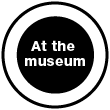


 |
||
 |
||
|
Click the image above to enlarge it. In this picture, some cars park in the shadow and others seem to park in daylight. We infer that the brown colour of Car 2 is a result of the effects of the shadow on the colour the car would have had if there had been no shadow. The correction process leads us to perceive it as orange. However, when we are deprived of the illumination information, we see the uncorrected colour of Car 2, which in this case is similar to that of Car 1. The most useful information we can have about an object is its reflectance as a function of wavelength or reflectance spectrum (see above). When we have clues from other parts of a picture that the object is in shadow or illuminated by coloured light, we automatically try to discount the effects of the shadow or illumination to arrive at the reflectance. This process is so strong that we are unable to judge the 'apparent' (uncorrected) colour, and have great difficulty comparing the 'apparent' colours of two objects differently illuminated - in this case the two cars marked 1 and 2. Car 2 appears to be in white light, and we judge its reflectance spectrum to be that of a brown object; while we judge the reflectance spectrum of Car 1 to be that of an orange car after correcting for the illumination, and are surprised to be shown that the 'apparent' colours of the two cars are the same. Links:
|
||

 Orange and Brown are the same Colour!
Orange and Brown are the same Colour!